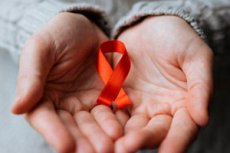HIV vaccine trial sparks key antibodies, nearing success
Sist anmeldt: 14.06.2024

Alt iLive-innhold blir gjennomgått med medisin eller faktisk kontrollert for å sikre så mye faktuell nøyaktighet som mulig.
Vi har strenge retningslinjer for innkjøp og kun kobling til anerkjente medieområder, akademiske forskningsinstitusjoner og, når det er mulig, medisinsk peer-evaluerte studier. Merk at tallene i parenteser ([1], [2], etc.) er klikkbare koblinger til disse studiene.
Hvis du føler at noe av innholdet vårt er unøyaktig, utdatert eller ellers tvilsomt, velg det og trykk Ctrl + Enter.

An HIV vaccine candidate developed at the Duke Human Vaccine Institute produced low levels of broadly neutralizing HIV antibodies among a small group of people participating in a clinical trial in 2019.
The results, published May 17 in the journal Cell not only confirm that the vaccine can induce these antibodies to combat different strains of HIV, but also show that this process can be initiated within a few weeks, triggering an important immune response.
The vaccine candidate targets a region on the outer envelope of HIV-1 called the membrane proximal outer region (MPER), which remains stable even as the virus mutates. Antibodies against this stable region on the outer envelope of HIV can block infection by many different circulating strains of HIV.
"This work represents a significant advance because it demonstrates the ability to induce antibodies through immunizations that neutralize the most challenging strains of HIV," said senior author Barton F. Haynes, MD, director of the Duke Vaccine Institute. "Our next steps are to induce more potent neutralizing antibodies against other sites of HIV to prevent the virus from escaping. We are not there yet, but the path forward is now much clearer."
The research team analyzed data from a phase I clinical trial of the vaccine candidate developed by Haynes and S. Munir Alam, Ph.D., at DHVI.
Twenty healthy, HIV-negative people participated in the trial. Fifteen participants received two of the four planned doses of the study vaccine, and five received three doses.
After just two immunizations, the vaccine showed a 95% serum response and a 100% CD4+ T-cell response in the blood, two key indicators demonstrating strong activation of the immune system. Most of the serum responses were directed to the part of the virus targeted by the vaccine.
An important point is that broadly neutralizing antibodies were induced after just two doses.
The trial was stopped when one participant experienced a non-fatal allergic reaction similar to rare cases reported with COVID-19 vaccination. The team investigated the cause of this event, which is likely related to the additive.
“A series of events are required to produce a broadly neutralizing antibody, and this usually takes several years after infection,” said lead author Wilton Williams, PhD, assistant professor of surgery at Duke University and a member of the DHVI.
"The challenge has always been to reproduce the required events in a shorter period of time with a vaccine. It was very exciting to see that with this vaccine molecule we were actually able to produce neutralizing antibodies within a few weeks."
Other features of the vaccine were also promising, especially the way key immune cells were kept in a developmental state that allowed them to continue acquiring mutations so they could evolve with the ever-changing virus.
The researchers noted that more work remains to be done to create a more robust response and target more regions of the virus's envelope. A successful HIV vaccine will likely have at least three components, all of which will target different parts of the virus.
"Eventually we will need to hit all the vulnerable areas of the shell so that the virus can't escape," Haynes said.
"But this study demonstrates that broadly neutralizing antibodies can indeed be induced in people by vaccination. Now that we know that induction is possible, we can repeat what we did here with antibodies targeting other vulnerable sites shell of the virus."
